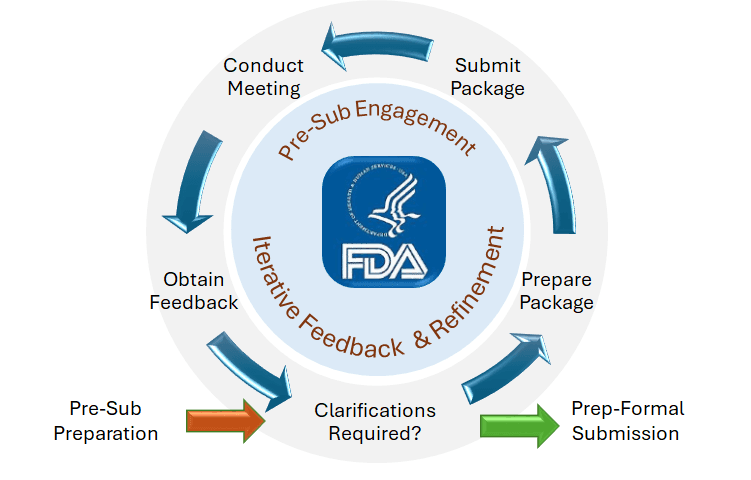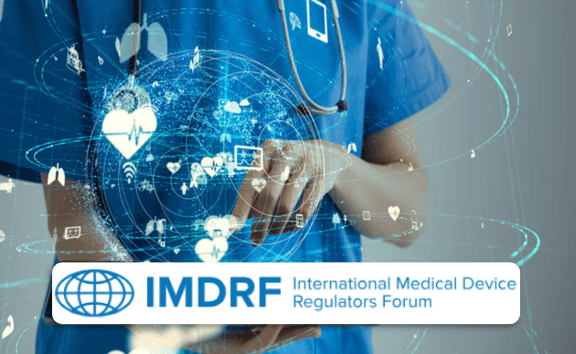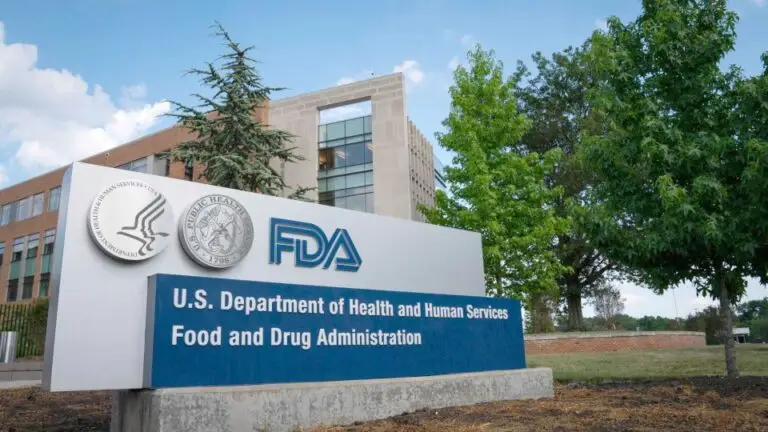The Benefits and Considerations of FDA Pre-Submission Meetings
Navigating the regulatory landscape for medical devices can be complex and challenging. One invaluable tool to streamline this process is the FDA’s Pre-Submission (Pre-Sub) program. This program offers medical device manufacturers an opportunity to engage in early and constructive dialogue with the FDA, potentially smoothing the path to market approval.
In the development of medical devices, regulatory considerations are often addressed during the initial stages, often checked off as a mere formality, and revisited only after product development or even after validation studies have been conducted. While the Software Development Life Cycle (SDLC) employs agile methodologies to engage customers, mitigate risks, and align with business objectives, regulatory interactions frequently adhere to a traditional, sequential (waterfall) approach.
This article advocates for adopting an agile framework in regulatory submissions, leveraging the Pre-Sub program, and drawing parallels between the SDLC and a proposed Agile Regulatory Engagement Approach. We begin by drawing a parallel to the Agile SDLC model; we then review the Pre-Sub program outlining pros and cons including examples of engagement by the author on clearing various devices, outline both the PCCP and eSTAR mechanism.
Mapping Agile SDLC Iterative Stage to Regulatory Engagement

The Pre-Submission program, part of the FDA’s broader Q-Submission Program, allows manufacturers to seek feedback from the FDA on various aspects of their device development and regulatory strategy before submitting formal marketing applications. This proactive approach can be applied to various submission types, including 510(k)s, De Novo requests, and PMAs. (see the FDA documentation for Requests for Feedback and Meetings for Medical Device Submissions)
Key Benefits of Pre-Submission Meetings
-
Early Feedback and Clarification – Engaging in a Pre-Sub meeting enables manufacturers to both align and obtain the FDA’s current thinking on their device’s safety and effectiveness. This early feedback can clarify regulatory requirements, testing protocols, and clinical study designs, thereby reducing uncertainties and aligning development strategies with FDA expectations.
-
Risk Mitigation – By discussing potential challenges and questions upfront, manufacturers can identify and address issues that might lead to delays or rejections in the formal review process. This proactive approach helps in mitigating risks associated with device approval.
-
Resource Optimization – Understanding the FDA’s expectations early allows companies to allocate resources more effectively, focusing on necessary studies and documentation, and avoiding unnecessary tests. This targeted approach can lead to cost savings and a more efficient development process.
-
Enhanced Submission Quality – Pre-Sub meetings provide insights that can improve the quality and completeness of the final submission, increasing the likelihood of a smoother and faster review process.
Potential Drawbacks of the Pre-Submission Process
While the Pre-Sub program offers numerous benefits, certain challenges may arise:
-
Resource Allocation – Preparing for and conducting Pre-Sub meetings requires substantial time and effort, which could strain resources, especially for smaller organizations.
-
Unanticipated Feedback – The FDA may request additional studies or data during the Pre-Sub process, leading to unforeseen costs and delays.
-
Non-Binding Nature – Feedback provided during Pre-Sub meetings is non-binding, meaning the FDA’s perspectives could evolve, potentially necessitating further adjustments.
Feedback that I have received from regulatory groups argue that had low/poor-benefits from Pre-Sub meeting given the Non-Binding Nature of the FDA response. While indeed the FDA will always preface responses that their feedback is not definite until they review the full submission, in my experience, the interactions have been always extremely helpful in shaping the narrative and retiring concerns and risks.
Timeliness of Response and Engagement
Now, as in any feedback, timeliness of engagement, response and action by the company is crucial. If there are significant delays in responses or submissions following an FDA Pre-Sub Engagement, there is the risk that your submission may be set aside, and a new FDA reviewer may be assigned. In such a scenario, the benefits of the pre-sub engagement may be diminished. I had the unfortunate experience of having this resetting taking place given a long delay in engaging with the agency again. This delay was justified internally to the company given a shift in priorities and reallocation of resources. Yet, some of the guidance we had received, was still helpful in the follow up communications.
When to Avoid a Pre-Submission Strategy
While the Pre-Sub process can be advantageous, there are scenarios where it might be less beneficial:
-
Mature and Well-Understood Devices – For devices with established regulatory pathways and clear guidance documents, the value of a Pre-Sub meeting diminishes, as requirements are already well-defined.
-
Time-Sensitive Submissions – If project timelines are critical, the additional time required for the Pre-Sub process (typically 70-75 days) may not be feasible. Yet, I would not recommend this for manufacturers who have had minimal experience in clearing devices or if the device is rather complex and introduces new aspects. Not well-prepared submissions may actually introduce significant delays, as they might raise more questions or concerns.
-
Clearance of Minor Modifications – For devices undergoing minor changes that do not significantly impact safety or effectiveness, a Pre-Sub meeting may be unnecessary.
-
Lack of Specific Questions If there are no particular concerns or uncertainties regarding the regulatory pathway, the benefits of a Pre-Sub meeting may be limited.
Incorporating Predetermined Change Control Plans (PCCPs)
A brief note of strategic consideration is warranted at this point with respect to PCCP. In devices, especially those enabled with Artificial Intelligence (AI), that are expected to undergo iterative improvements, the FDA recommends including a Predetermined Change Control Plan (PCCP) in the marketing submission. A PCCP outlines the types of modifications anticipated post-approval and the methods for implementing and validating these changes. This approach allows manufacturers to make certain updates without submitting new marketing applications, provided the changes are within the scope of the approved PCCP, thereby facilitating continuous improvement while maintaining device safety and effectiveness.
Leveraging the eSTAR Program for Streamlined Submissions
The FDA’s electronic Submission Template And Resource (eSTAR) program is an interactive, standardized electronic submission template designed to enhance the quality and consistency of medical device submissions. eSTAR guides applicants through the submission process, ensuring all necessary information is included and formatted correctly. Key benefits of using eSTAR include:
-
Standardized Format: Ensures consistency across submissions, facilitating a more efficient review process.
-
Interactive Guidance: Provides built-in instructions and references to help submitters provide the correct information.
-
Error Checking: Reduces deficiencies by flagging missing or incorrect data before submission.
As of October 1, 2023, the use of eSTAR is required for all 510(k) submissions, unless exempted, to the Center for Devices and Radiological Health (CDRH) or to the Center for Biologics Evaluation and Research (CBER). This mandatory implementation underscores the FDA’s commitment to modernizing and streamlining the submission process.
A Minimal Viable Package for a Pre-Submission
It is all and good to advocate for frequent interactions with the FDA, so let’s conclude the discussion by outlining what one should focus on when preparing a minimal viable package for an FDA Pre-Submission (Pre-Sub) meeting.
It’s essential to include key components that provide the FDA with a clear understanding of your device and facilitate constructive feedback. According to the FDA’s guidance on the Pre-Submission Program, the following elements are recommended:
-
Cover Letter: Introduce your submission, specifying the type of Pre-Sub request and providing essential details such as the device name and contact information.
-
CDRH Premarket Review Submission Cover Sheet (Form FDA 3514): Complete this form to streamline the review process.
-
Device Description: Provide a comprehensive overview of the device
-
Indications for Use (IFU): Clearly define the disease or condition the device is intended to diagnose, treat, prevent, cure, or mitigate, and describe the patient population for which the device is intended.
-
Regulatory History: Summarize any prior interactions with the FDA regarding the device, including previous submissions or communications.
-
Proposed Regulatory Plan: Outline your strategy for regulatory approval, including Device classification rationale, Proposed regulatory pathway (e.g., 510(k), De Novo, PMA) and Identification of predicate devices, if applicable.
-
Provide Supporting Evidence and Testing Plans: Present available data and planned studies that support the device’s safety and effectiveness. These may include preclinical study designs, clinical study protocols, performance testing plans, risk analysis and mitigation strategies.
-
Specific Questions for FDA Feedback: List targeted questions where FDA guidance is sought, these may include study design appropriateness, regulatory pathway suitability, and risk assessment adequacy.
By incorporating these components into your Pre-Sub package, you provide the FDA with a clear and concise overview of your device and regulatory strategy, facilitating productive feedback and a smoother path toward market approval.
Embracing Agile Regulatory Interaction for Medical Devices
Hence, in the rapidly evolving landscape of medical device adopting an agile approach to regulatory interactions is crucial. The FDA’s Pre-Submission (Pre-Sub) program embodies this agility, facilitating early and iterative engagement between developers and regulators. This proactive collaboration mirrors agile software development methodologies, allowing for continuous feedback and adaptation throughout the development lifecycle.
Key Benefits of Agile Regulatory Interaction:
-
Continuous Feedback: Early and ongoing communication with the FDA enables developers to promptly address potential issues, aligning development processes with regulatory expectations.
-
Iterative Development: An agile regulatory approach supports iterative cycles of development and review, fostering continuous improvement and innovation in medical devices products.
-
Risk Reduction: By identifying and mitigating risks early, agile regulatory interactions enhance the safety and effectiveness of medical devices, ensuring better patient outcomes.
Integrating agile principles into regulatory interactions through the FDA’s Pre-Sub program offers significant advantages for medical device developers. This approach not only streamlines the development process but also ensures that innovative medical software reaches patients safely and efficiently. By embracing agile regulatory strategies, developers can navigate the complex landscape of medical device approval with greater confidence and success.
If you have enjoyed reading this article, please leave me comment or reach out to me.



Awesome https://is.gd/tpjNyL
Very good https://is.gd/tpjNyL